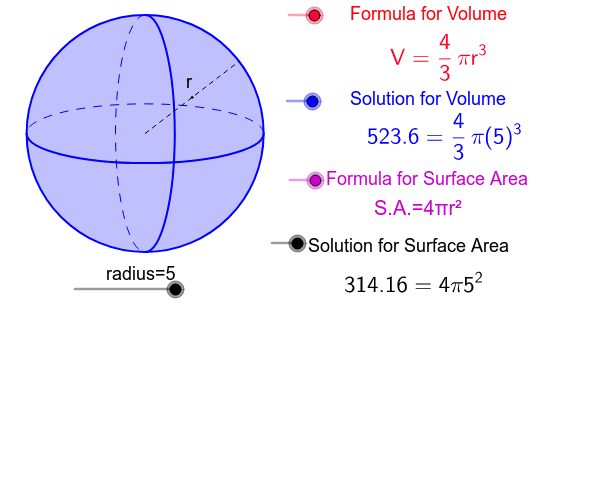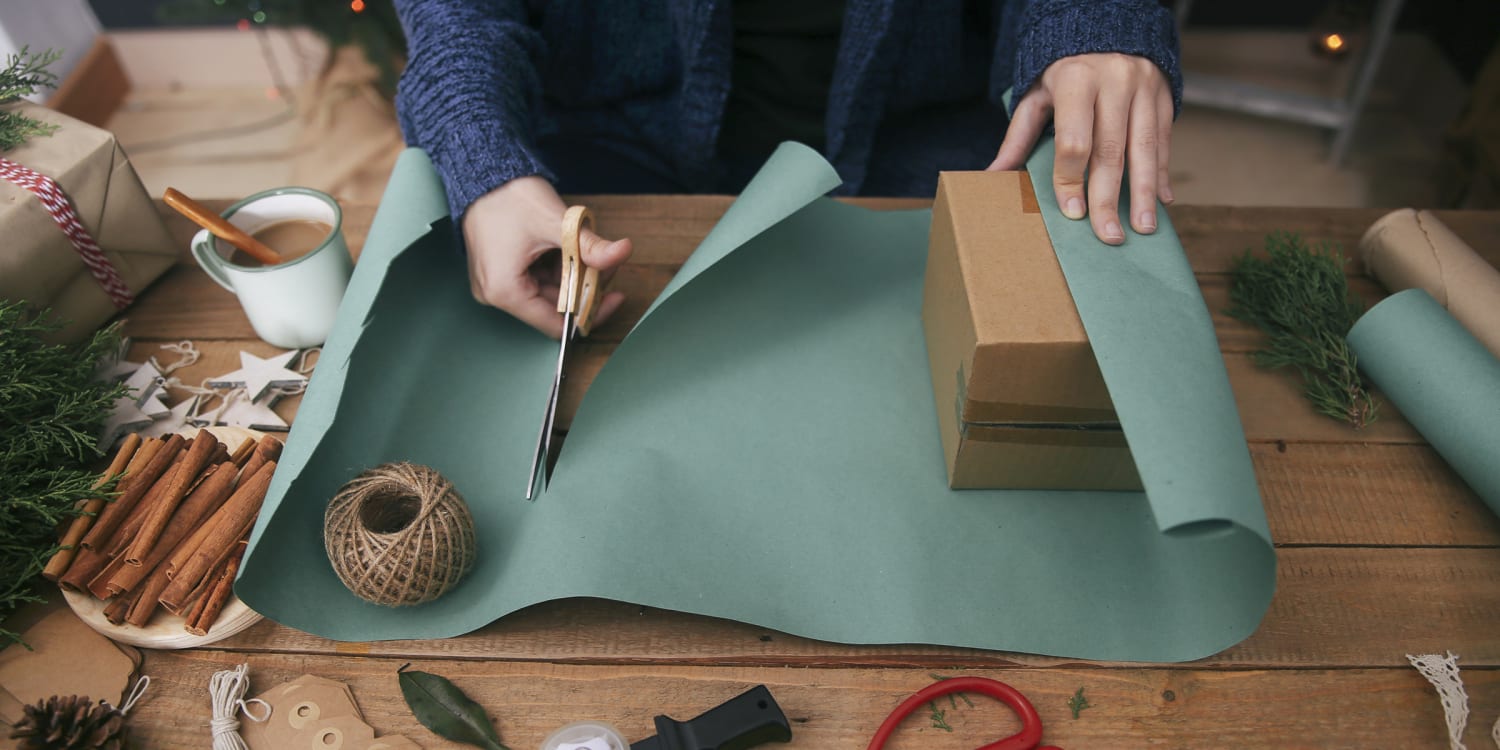How much wrapping paper is needed to completely cover the outside of a gift like one of these, assuming no gaps or overlaps?
The answer to this question requires an understanding of the surface area. This is an example that can be used to answer the question of “what is surface area?“
What is Surface Area?
The surface area measures the area of the outside of a three-dimensional shape. It can be described as the space covering the outside of a solid figure. Surface area and area are both measured in square units, but they are not the same.
For example:
- The area of a flat, two-dimensional picture is the space covered by the paper. This painting is on the page of a magazine. The page is flat, with just two dimensions: length and width.
- Contrast that with the surface area of a painted box. The box is a three-dimensional object and has three dimensions: length, width, and depth.
There are formulas for calculating the area of a two-dimensional shape, there are formulas for calculating the surface area of a three-dimensional solid. There are also formulas for calculating the surface area of different three-dimensional objects. Different solid shapes have different formulas.
Sphere
A sphere is a three-dimensional object that is round in shape. The sphere is defined in three axes, i.e., x-axis, y-axis and z-axis. This is the main difference between a circle ana d sphere. A sphere does not have any edges or vertices, like other 3D shapes.
The points on the surface of the sphere are equidistant from the center. Hence, the distance between the center and the surface of the sphere are equal at any point. This distance is called the radius of the sphere. Examples of spheres are a ball, a globe, the planets, etc.

The Greek mathematician Archimedes discovered that the surface area of a sphere is the same as the lateral surface area of a cylinder having the same radius as the sphere and the height the length of the diameter of the sphere.
The surface area of a sphere is defined as the region covered by its outer surface in three-dimensional space. A Sphere is a three-dimensional solid having a round shape, just like a circle. The formula for the total surface area of a sphere in terms of pi (π) is given by:
Surface Area = 4 π r2 square units
The difference between a sphere and a circle is that a circle is a two-dimensional figure or a flat shape, whereas, a sphere is a three-dimensional shape. Therefore, the area of circle is different from the area of the sphere.
Area of circle = π r2
The surface area of a sphere formula is given by,
A = 4 π r2 square units
In terms of diameter, the surface area of a sphere is expressed as,
S = 4π(d/2)2 where d is the diameter of the sphere.
For any three-dimensional shapes, the area of the object can be categorized into three types. They are:
- Curved Surface Area
- Lateral Surface Area
- Total Surface Area
Curved Surface Area: The curved surface area is the area of all the curved regions of the solid.
Lateral Surface Area: The lateral surface area is the area of all the regions except the bases (i.e., top and bottom).
Total Surface Area: The total surface area is the area of all the sides, top, and bottom of the solid object.
In the case of a Sphere, it has no flat surface.
Therefore,
Total surface area of a sphere = Curved surface area of a sphere
Solved Examples
Let us take some examples to learn how to calculate the surface area of a sphere using its formula.
Example:
Find the surface area of a spherical ball that has a radius of 9 inches.
Solution:
Note the radius of the sphere. Here, the radius of the ball is 9 inches.
As we know, the surface area of sphere = 4πr2, so after substituting the value of r = 9, we get,
surface area of sphere = 4πr2 = 4 × 3.14 × 92 = 4 × 3.14 × 81 = 1017.36
Therefore, the surface area of the sphere is 1017.36 in2
Example:
Find the surface area of a sphere if its radius is given as 6 units.
Solution:
Given, the radius ‘r’ = 6 units. So, let us substitute the value of r = 6 units
⇒ The surface area of the sphere = 4πr2 = 4 × π × 62 = 4 × 3.14 × 36 = 452.16 unit2
∴ The surface area of the sphere is 452.16 unit2
Example:
Calculate the curved surface area of a sphere having a radius equal to 3.5 cm (Take π= 22/7)
Solution:
We know,
Curved surface area = Total surface area = 4 π r2 square units
= 4 × (22/7) × 3.5 × 3.5
Therefore, the curved surface area of a sphere= 154 cm2
Volume
Volume is defined as the space occupied within the boundaries of an object in three-dimensional space. It is also known as the capacity of the object.
Every three-dimensional object occupies some space. This space is measured in terms of its volume. Finding the volume of an object can help us to determine the amount required to fill that object, like the amount of water needed to fill a bottle, an aquarium, or a water tank.
The volume of 3-Dimensional Shapes
Since different three-dimensional objects have different shapes, their volumes are also variable. Let us look at some three-dimensional shapes and learn how to calculate their volume(V).
Volume of Sphere
The volume of a sphere is the measurement of the space it can occupy. A sphere is a three-dimensional shape that has no edges or vertices.

The volume of Sphere Formula
The volume of sphere formula can be given for a solid as well as a hollow sphere. In the case of a solid sphere, we only have one radius but in the case of a hollow sphere, there are two radii, having two different values of radius one for the outer sphere and one for the inner sphere.
The volume of Solid Sphere
If the radius of the sphere formed is r and the volume of the sphere is V. Then, the volume of the sphere is given by:
Volume of Sphere, V = (4/3) πr3
The volume of Hollow Sphere
If the radius of the outer sphere is R, the radius of the inner sphere is r and the volume of the sphere is V. Then, the volume of the sphere is given by:
The volume of Sphere, V = Volume of Outer Sphere – Volume of Inner Sphere
V = (4/3) πR3 – (4/3) πr3 = (4/3) π(R3 – r3)

How to Calculate Volume of Sphere?
The volume of a sphere is the space occupied inside a sphere. The volume of the sphere can be calculated using the formula of the volume of the sphere. The steps to calculate the volume of a sphere are:
- Step 1: Check the value of the radius of the sphere.
- Step 2: Take the cube of the radius.
- Step 3: Multiply r3 by (4/3)π
- Step 4: At last, add the units to the final answer.
Let us take an example to learn how to calculate the volume of a sphere using its formula.
Solved Examples
Example:
What is the volume of a sphere with a radius of 12?
Solution:
To solve for the volume of a sphere, you must first know the equation for the volume of a sphere.
In this equation, r is equal to the radius. We can plug the given radius from the question into the equation for r.
V = 4/3(π)(12^3)
Now we simply solve for V.
V = 4/3(π)(1728)
V = (π)(2304) = 2304 π
The volume of the sphere is 2304 π.
Example:
What is the volume of a sphere with a radius of 4? (Round to the nearest tenth)
Solution:
To solve for the volume of a sphere you must first know the equation for the volume of a sphere.
The equation is
Then plug the radius into the equation for r yielding
V = 4/3(4^3) π
Then cube the radius to get
V = 4/3(64) π
Multiply the answer by 4/3 and to yield 85.3 π.
The answer is 85.3 π.
Example:
For a sphere, the volume is given by V = (4/3) πr3 , and the surface area is given by A = 4 πr2. If the sphere has a surface area of 256 π, what is the volume?
Solution:
Given the surface area, we can solve for the radius and then solve for the volume.
4πr2 = 256 π
4r2 = 256
r2 = 64
r = 8
Now solve the volume equation, substituting for r:
V = (4/3) π (8)3
V = (4/3) π (512)
V = (2048/3) π
V = 683 π

